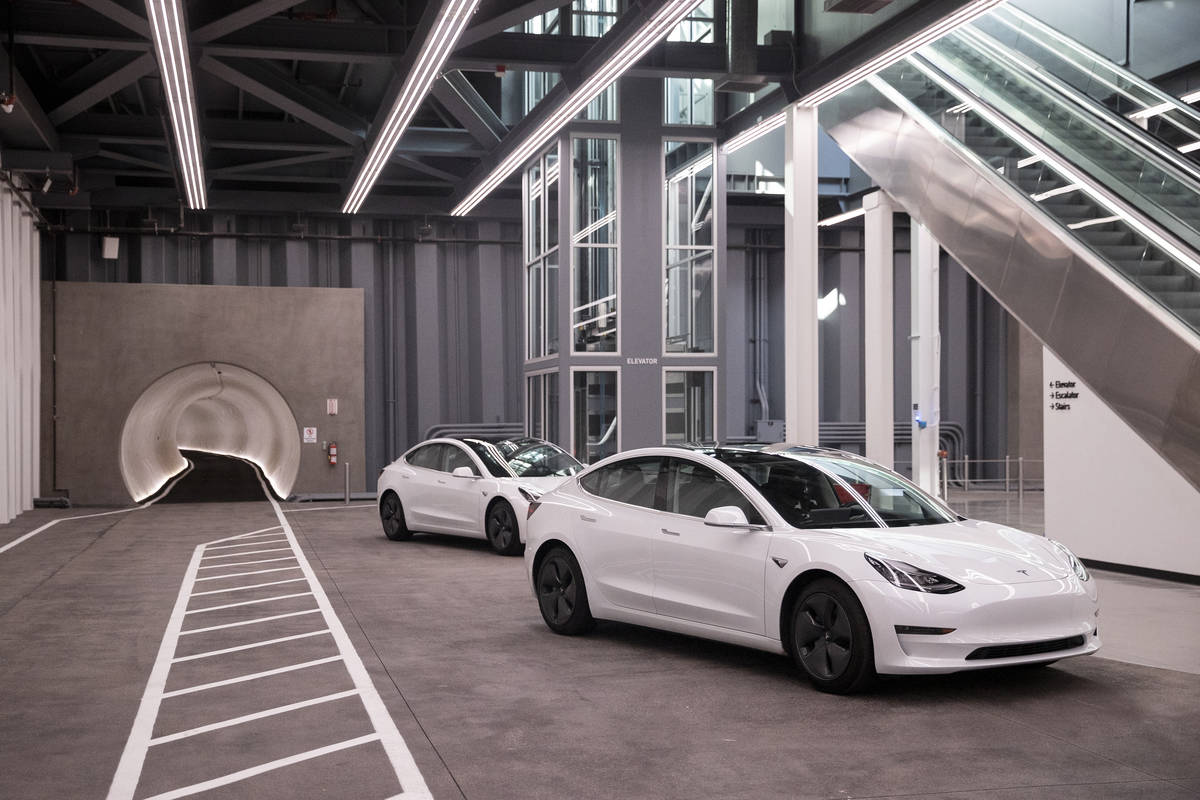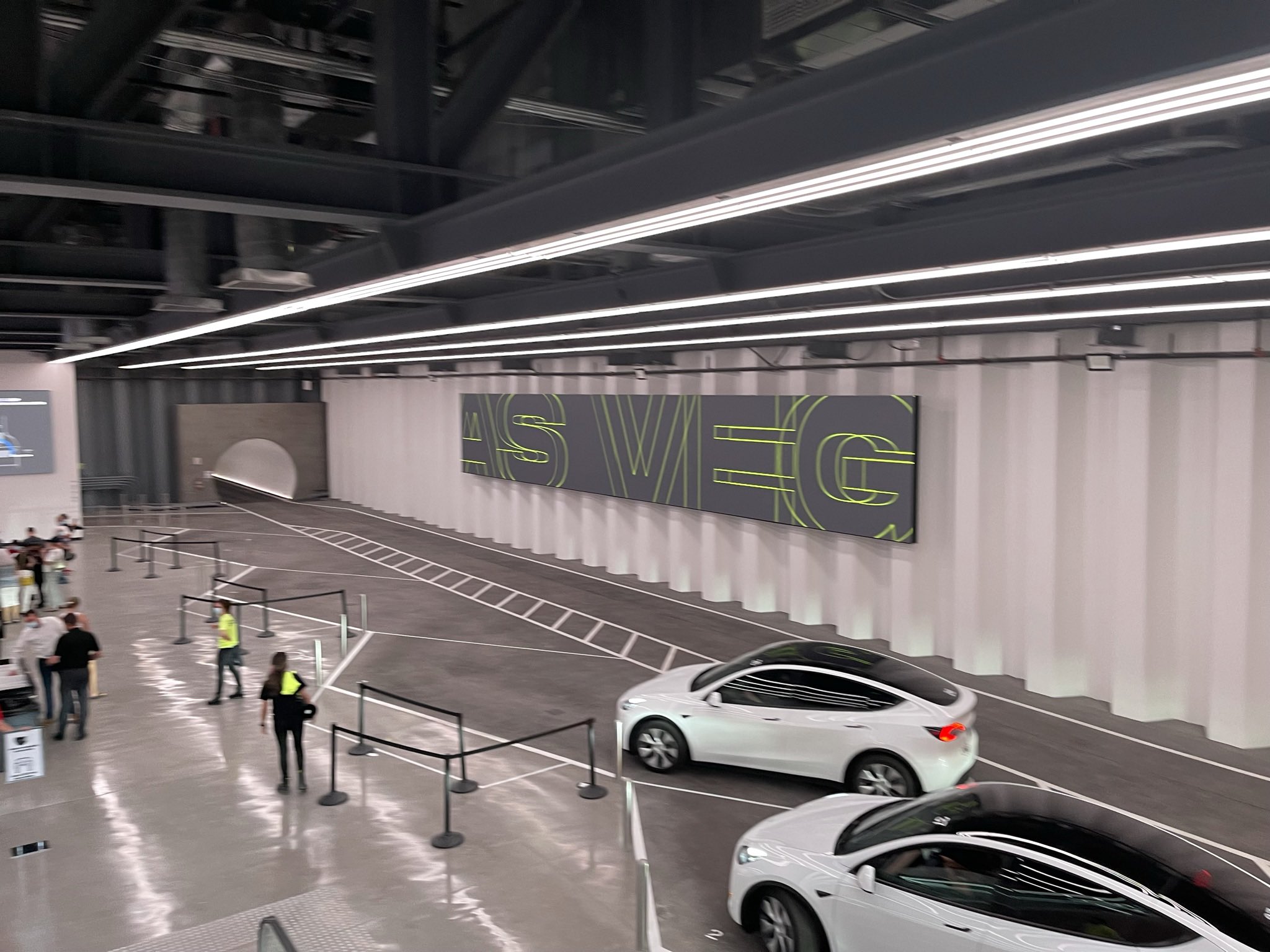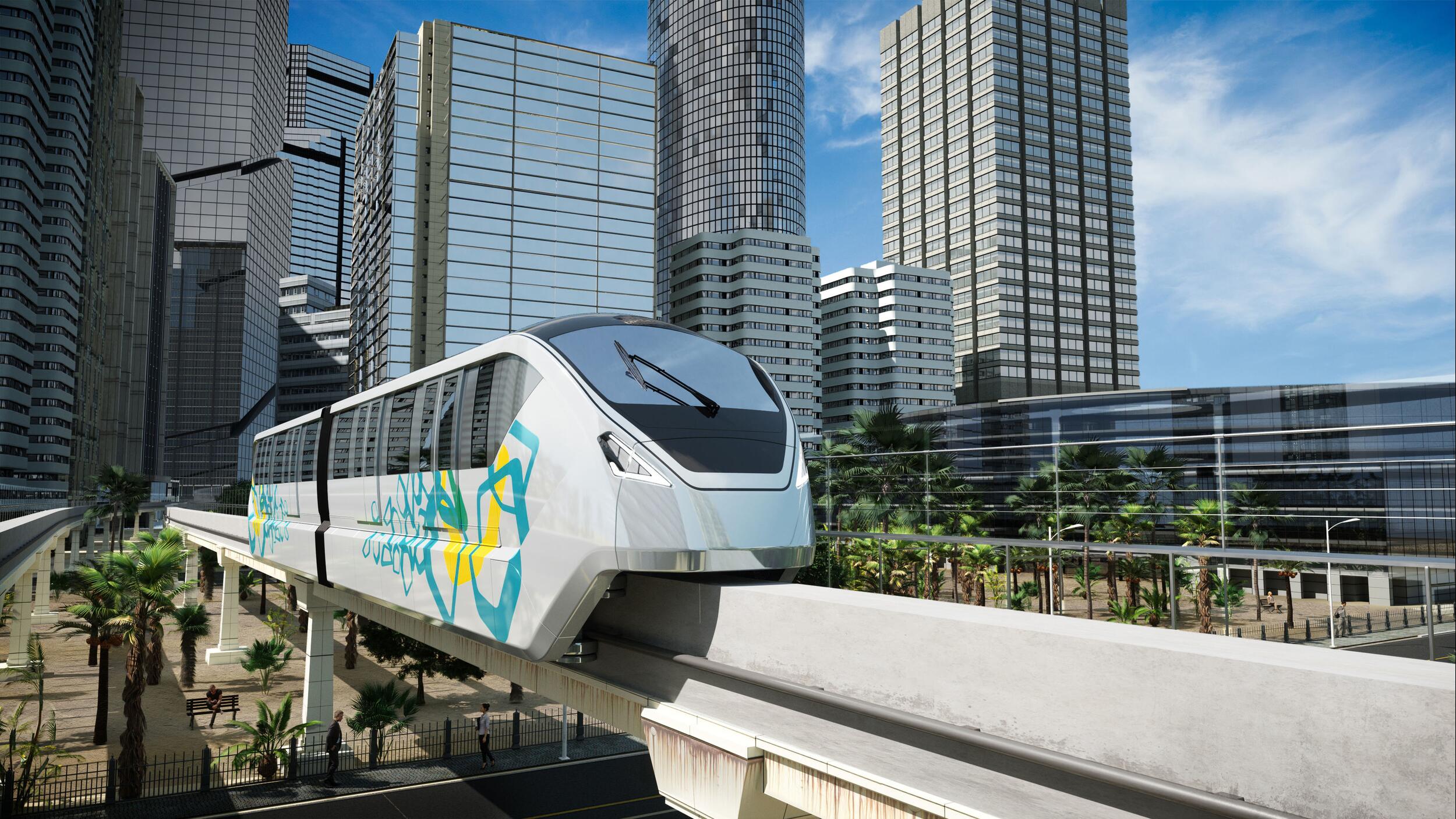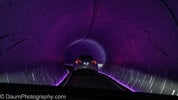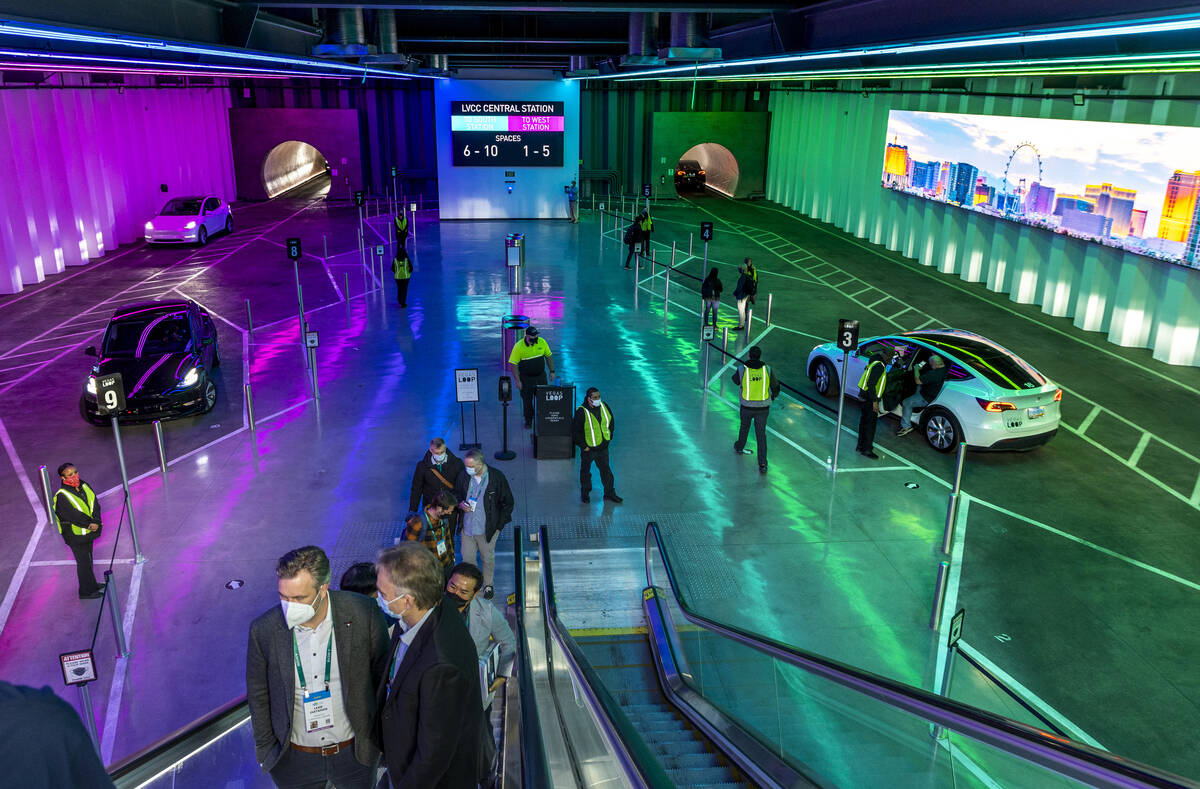The Boring Company’s people-moving “Loop” be beneath the Las Vegas Convention Center started carrying passengers this week.
The $52.5 million tunnel is filled with Tesla vehicles that carry passengers around the 1.7-mile stretch.
The construction took about 18 months and was finished about two months ago. The system is ten-times faster than walking around the convention center.
“We’re grateful to the Las Vegas Convention and Visitors Authority and all local stakeholders for providing us the opportunity to construct our first commercial project in one of the world’s most dynamic destinations,” Boring Co. President Steve Davis said in a statement reported by The Los Angeles Business Journal. “We are proud to have developed and delivered an exciting transportation solution to the Las Vegas Convention Center.”
The Loop currently consists of three passenger stations. Passengers can travel the entire route in about two minutes at speeds of up to 40 miles per hour. The company ultimately plans to use a fleet of 62 Tesla vehicles that can carry up to 4,400 people per hour.
Last edited by a moderator:



